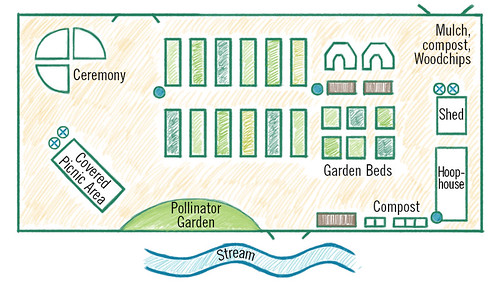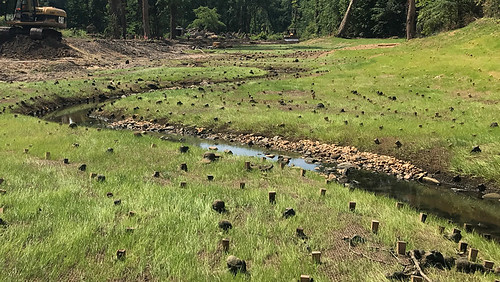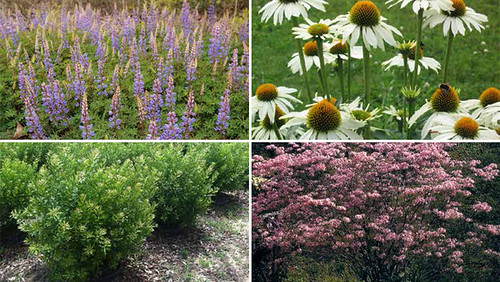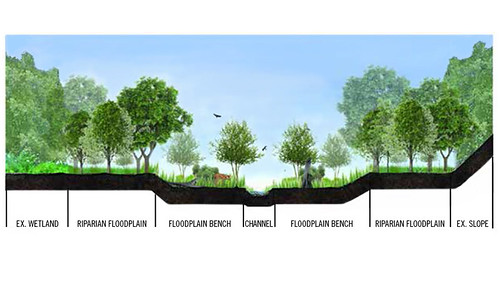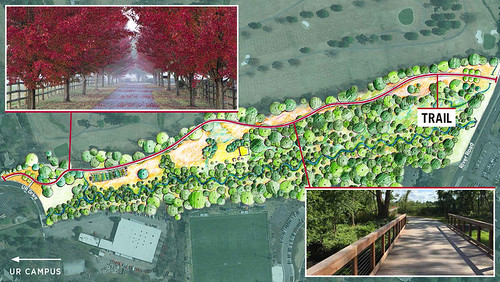News, Postscript
Campus just got even more beautiful
“Our first test, and we passed!” Bob Siegfried, a senior project manager for contractor Resource Environmental Solutions, wrote after a May rainstorm. He had good reason to celebrate. His company led the restoration of Little Westham Creek and covered the costs of UR’s Eco-Corridor project, which will be completed this fall. In exchange, RES received mitigation credits, which offset the environmental effects of development projects.
The stream restoration project is primarily about improving water quality, in keeping with the university’s commitment to sustainability. The improvements to the Gambles Mill Trail are all about connecting campus with the river and the community. The entire project makes the physical campus more beautiful, more walkable, and more of a tool for learning.

